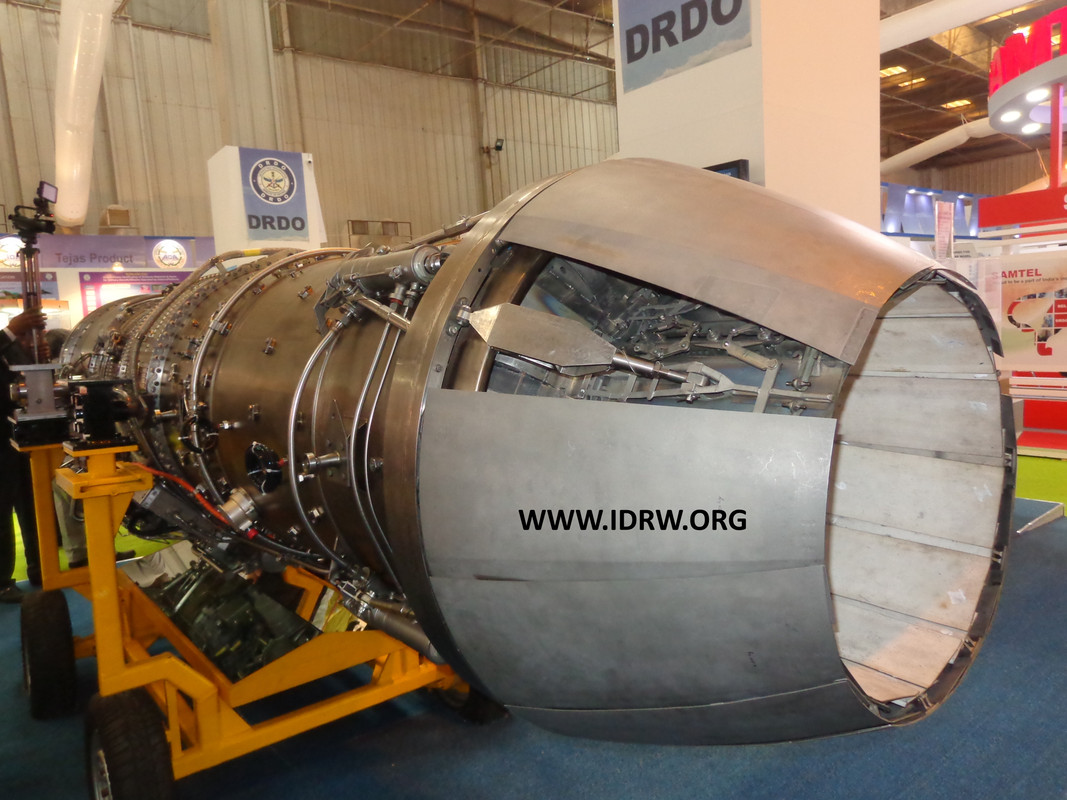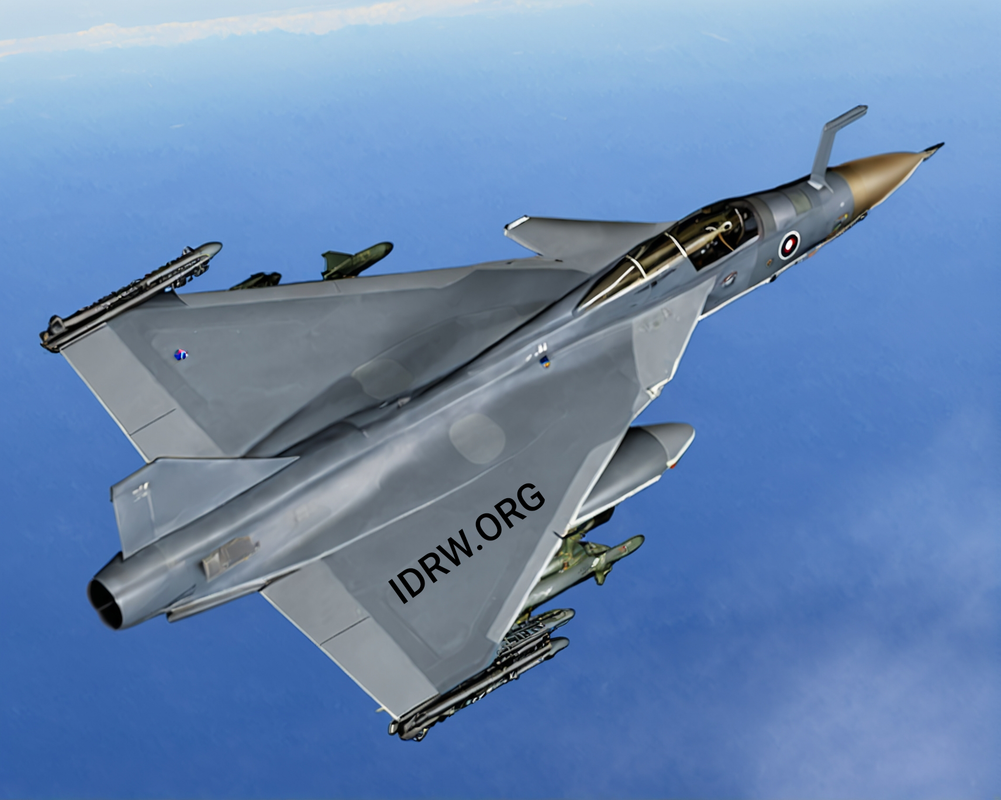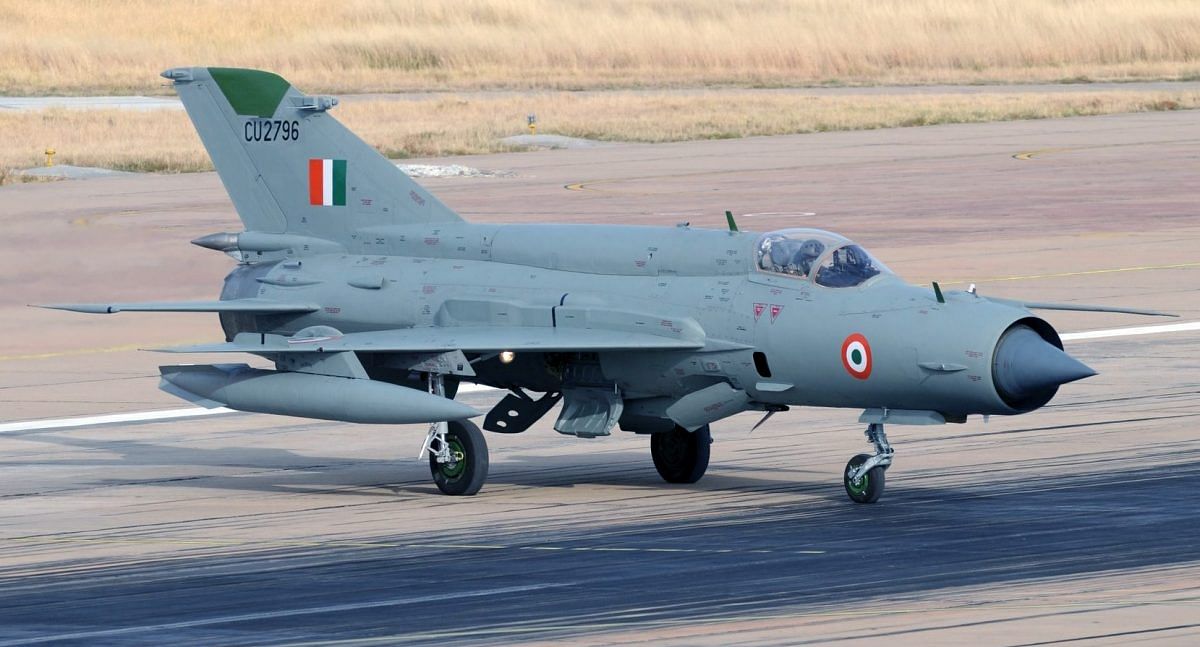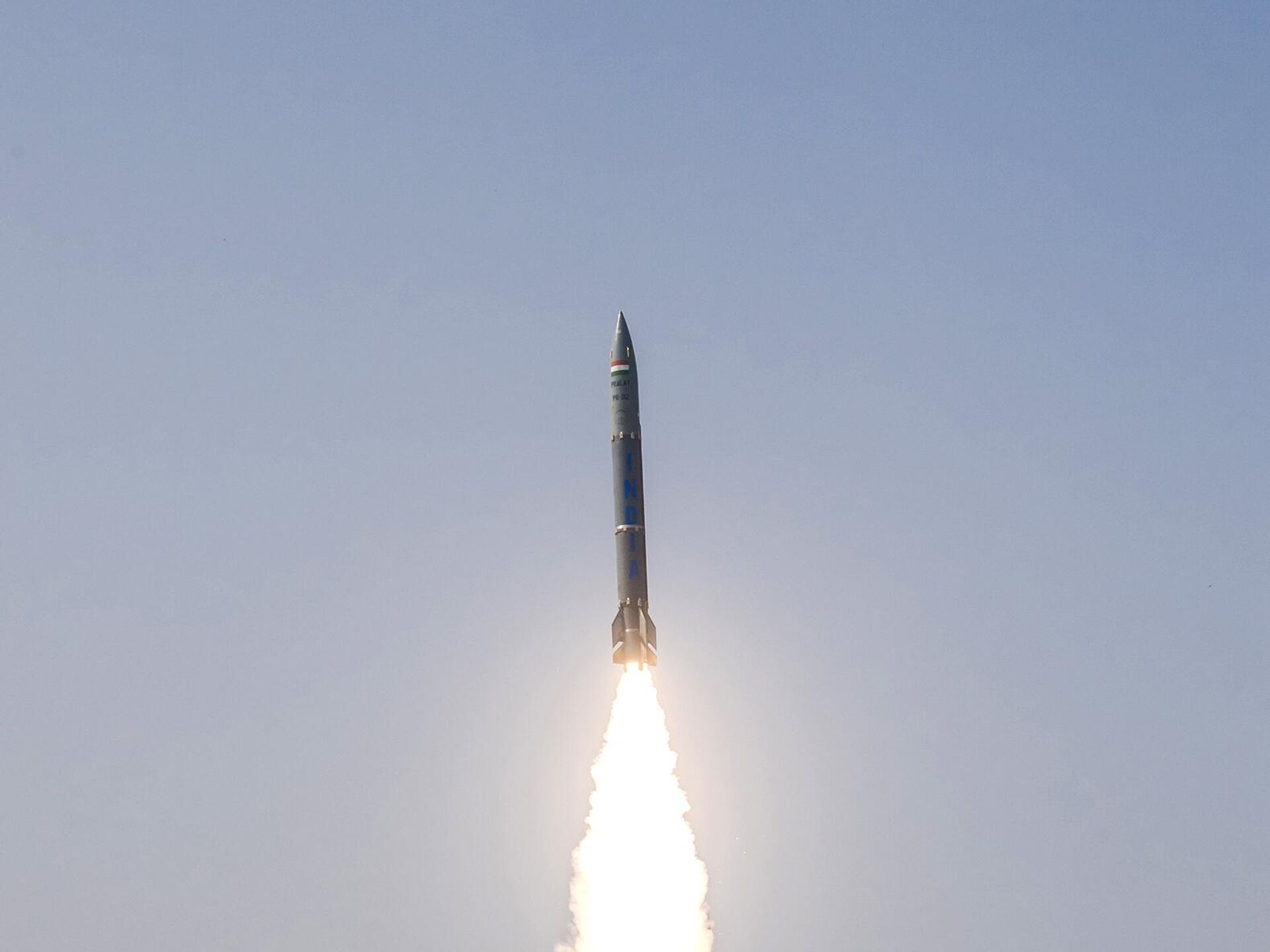DRDO
SOURCE: RAUNAK KUNDE / NEWS BEAT / IDRW.ORG


Following the successful completion of a significant defense contract with the Philippine Marine Corps (PMC), BrahMos Aerospace is now turning its attention to another potential deal, this time with the Philippine Army. This move comes as part of an expanding strategic partnership between India and the Philippines, focusing on bolstering the latter’s defense capabilities.
In a landmark deal, BrahMos Aerospace delivered the BrahMos supersonic cruise missiles to the PMC, enhancing their coastal defense capabilities. This contract, valued at around $375 million, was for three missile batteries, marking India’s first major defense export. The BrahMos missile system, known for its speed, precision, and versatility, has been instrumental in strengthening the Philippines’ stance against regional maritime threats, particularly in the contentious South China Sea.
Continue readingSOURCE: RAUNAK KUNDE / NEWS BEAT / IDRW.ORG


The Gas Turbine Research Establishment (GTRE), the Indian defence research body responsible for developing Indigenous jet engines, is actively pursuing a significant leap in India’s defence capabilities. Speaking to idrw.org on the condition of anonymity, a GTRE official revealed that once the Dry Kaveri+ Afterburner section is successfully tested on a flying testbed, GTRE will propose a government funding request for the development of a 90 kN engine. This new engine, an enhanced variant of the current Kaveri engine, is aimed at replacing the F-404 engines on the Tejas Mk1A fighter jets within the next decade.
The primary objective behind this development is to create a new generation of Kaveri engines capable of generating 20-25% more thrust than the existing Dry Kaveri engine. This increase in power will be achieved by refining the core of the Kaveri engine, which is currently under development. Once the enhanced core is validated, it will be coupled with a new afterburner section, enabling the engine to generate 90 kN of thrust, making it a capable replacement for the F-404 engines currently powering the Tejas Mk1A fleet.
Continue readingSOURCE: RAUNAK KUNDE / NEWS BEAT / IDRW.ORG


Bharat Earth Movers Limited (BEML), a key player in India’s defence and heavy engineering sectors, is taking significant steps towards indigenizing high-performance engines with its DATRAN 1500HP project. The company has announced plans to send the third prototype of the DATRAN 1500HP engine to the UK for an extensive calibration and testing phase, marking a pivotal moment in India’s journey towards self-reliance in defence manufacturing.
The DATRAN 1500HP engine, currently under development, is set to undergo a rigorous process in the UK. It will see the engine fine-tuned for optimal performance, ensuring it meets the stringent requirements of military applications. Calibration in the UK leverages the advanced facilities and expertise available there for such specialized tasks.
Continue readingSOURCE: RAUNAK KUNDE / NEWS BEAT / IDRW.ORG


A senior Indian Air Force (IAF) official, responding to China’s development of its sixth-generation fighter jet, highlighted India’s potential to replicate a similar trajectory by building on the advancements from its fifth-generation Advanced Medium Combat Aircraft (AMCA) program. Speaking to idrw.org, the official emphasized that while China may have incorporated lessons and technologies from its fifth-generation J-20 program into its sixth-generation jet, India can adopt a similar approach to ensure its future fighters remain competitive.
The official underscored the importance of the AMCA program as a stepping stone for India’s aerospace ambitions. The AMCA, which is expected to make its first flight by 2028, is being developed as a 5.5-generation stealth fighter jet with advanced technologies like AI-driven avionics and mission systems, Stealth shaping and radar-absorbent materials and Next-generation sensors and electronic warfare suites.
Continue readingSOURCE: RAUNAK KUNDE / NEWS BEAT / IDRW.ORG


The Tejas MkII program, a significant milestone in India’s indigenous fighter jet development, is progressing smoothly under the collaborative efforts of Hindustan Aeronautics Limited (HAL) and the Aeronautical Development Agency (ADA). Both organizations are working closely to ensure that the aircraft not only makes its first flight in 2026 but also enters production by late 2029, with deliveries to the Indian Air Force (IAF) expected to commence in early 2030. This timeline is vital for the IAF, which has specific requirements for its modernization efforts and fighter fleet composition.
For the Tejas MkII to enter production at the desired time, HAL and the IAF must navigate a complex bureaucratic process. A key component of this is obtaining Clearance from the Cabinet Committee on Security (CCS), which follows the acceptance of necessity (AON) granted by the Defence Acquisition Council (DAC). The timeline for these approvals is critical; the IAF will go for CCS clearance by the end of 2027 so that the procurement process can proceed and the aircraft can be in production by late 2029.
Continue readingSOURCE: RAUNAK KUNDE / NEWS BEAT / IDRW.ORG


The Indian Air Force’s (IAF) iconic MiG-21 Bis fighter jets, a mainstay of India’s air power for decades, are set to retire by the end of 2025. As the final chapter of the MiG-21 Bis comes into view, discussions have emerged about the potential repurposing of these aircraft, with innovative but contentious proposals for their future use.
One of the most prominent suggestions is to convert the retired MiG-21 Bis aircraft into unmanned platforms to be used as aerial targets. These targets would serve as practice for India’s long-range air defence systems, particularly under Project Kusha, a DRDO-led program aimed at developing advanced air defence capabilities.
Continue readingSOURCE: RAUNAK KUNDE / NEWS BEAT / IDRW.ORG


India’s defence capabilities are set to scale new heights with the development of the S5-class SSBN (Submersible Ship Ballistic Nuclear) submarines. With a proposed submerged displacement of 13,000 tons, the S5-class submarines will mark a significant advancement in India’s nuclear triad, ensuring a robust second-strike capability. These submarines are designed to carry a formidable arsenal of 16 ballistic missile tubes, equipped with K-5 and K-6 MIRV (Multiple Independently Targetable Reentry Vehicle) SLBMs, with ranges of 5,000 to 8,000 kilometres.
Initially, the S5-class SSBN was planned to feature 12 missile tubes, with six on each side of the submarine. However, the design has been revised to accommodate eight tubes on each side, increasing the submarine’s capacity to carry 16 long-range ballistic missiles. This significant enhancement underlines India’s commitment to maintaining a credible and potent deterrence in a rapidly evolving strategic environment.
Continue readingSOURCE: RAUNAK KUNDE / NEWS BEAT / IDRW.ORG


The Defence Research and Development Organisation (DRDO) has taken a significant step in hypersonic technology by publicly showcasing wind tunnel models of three innovative missile systems at its Hypersonic Wind Tunnel facility in Hyderabad. This event not only highlights India’s advancements in high-speed missile technology but also underscores DRDO’s commitment to enhancing national defence capabilities.
The first model on display is of the “Common Hypersonic Glide Body,” a hypersonic weapon designed to travel at speeds exceeding Mach 5, making it one of the fastest military assets in development. This glide body is intended to be versatile, capable of being launched from various platforms, including ballistic missile systems, offering India a strategic advantage in both offensive and defensive operations. The CHGB’s ability to maneuver at high speeds makes it particularly challenging for existing missile defense systems to intercept, thereby providing India with a substantial deterrence capability.
Continue readingSOURCE: RAUNAK KUNDE / NEWS BEAT / IDRW.ORG


In a significant advancement for India’s aerospace sector, the Gas Turbine Research Establishment (GTRE) is poised to receive a new variant of the Kaveri engine, the ‘Dry Kaveri’, manufactured by Godrej Aerospace, by February next year. This engine will undergo crucial in-flight trials using Russia’s IL-76 aircraft at Gromov Flight Research Institute (GFRI), Moscow, Russia. , a step towards its eventual integration into the Ghataak Unmanned Combat Aerial Vehicle (UCAV) program.
The Dry Kaveri engine, a derivative of the original Kaveri project, is designed to produce 48 kN of thrust without an afterburner. This specification marks a departure from earlier versions, focusing on powering unmanned platforms where the complexity and weight of an afterburner are unnecessary. Godrej Aerospace, after securing an order in September 2022 to manufacture eight modules of this engine, has been at the forefront of this indigenous effort, showcasing India’s manufacturing capabilities in high-precision aerospace components.
Continue readingSOURCE: RAUNAK KUNDE / NEWS BEAT / IDRW.ORG


Spanish shipyard Navantia has proposed an unprecedented offer of complete Transfer of Technology (ToT) for its cutting-edge AIP system, the Bio-Ethanol Stealth Technology (BEST). Designed to enhance stealth and operational capabilities, the BEST AIP system is at the forefront of submarine propulsion technology. Navantia’s proposal positions it as a strong contender in India’s strategic submarine programs, including the ambitious Project-75 (I) and future initiatives such as Project-76.
The BEST system is an advanced Air-Independent Propulsion (AIP) technology that allows submarines to recharge their batteries while submerged. This eliminates the need for periodic snorkelling, a manoeuvre during which the submarine must surface, exposing itself to detection and potential attack. The innovative system uses a bioethanol reforming process, a renewable fuel derived from organic feedstock, to produce a hydrogen-rich stream. This hydrogen is combined with pure oxygen in a fuel cell, generating electrical power silently and stealthily.
Continue readingSOURCE: RAUNAK KUNDE / NEWS BEAT / IDRW.ORG


The Indian Air Force (IAF) is taking proactive steps to bolster the defences of its high-value force multiplier aircraft, including Airborne Warning and Control Systems (AWACS) and in-flight refuelling tankers. These platforms are critical for extending operational range and situational awareness but are increasingly vulnerable to the evolving threat of surface-to-air missiles (SAMs), including MANPADS (man-portable air-defense systems), laser-guided threats, and radar-guided missiles.
To address these risks, the IAF is exploring the integration of advanced Airborne Missile Protection Systems (AMPS) designed to detect, verify, and counteract missile threats in real-time. Such systems would employ a combination of countermeasures, including flares, chaff, and Directional Infrared Countermeasures (DIRCM), to protect aircraft from a wide range of missile threats.
Continue readingSOURCE: RAUNAK KUNDE / NEWS BEAT / IDRW.ORG


Brazil is showing significant interest in the BrahMos-NG (Next Generation) supersonic cruise missile, an advanced weapon system jointly developed by India and Russia. Designed to deliver Mach 3 speeds while maintaining a compact size, the BrahMos-NG is being viewed as a potential armament for Brazil’s Gripen-E fighter fleet. This missile, still under development by BrahMos Aerospace, is attracting international attention due to its unique combination of speed, size, and versatility.
The BrahMos-NG is a miniaturized version of the highly successful BrahMos supersonic cruise missile. Weighing just 1.3 tons, it is comparable in size to many subsonic cruise missiles, yet capable of travelling at three times the speed of sound (Mach 3). This combination offers a significant operational advantage.
Continue readingSOURCE: RAUNAK KUNDE / NEWS BEAT / IDRW.ORG


India’s plans to increase the indigenous content in the AL-31FP aero engines, which power the Su-30MKI fighter jets, have hit a roadblock as Russia has expressed reluctance to approve further localization efforts. These engines are produced under license by Hindustan Aeronautics Limited (HAL) at its Koraput division, with the current indigenous content standing at less than 54%. HAL aims to increase this to 63% in the coming years, but challenges surrounding intellectual property and raw material sourcing have complicated the process.
Under the original transfer of technology (ToT) agreement, HAL is required to source raw materials for the production of AL-31FP engines exclusively from Russia. This restriction limits HAL’s ability to substitute components with locally manufactured parts or use Indian alloys without Russian approval. While HAL and the Gas Turbine Research Establishment (GTRE) have developed plans to replace certain assemblies and sub-assemblies with locally produced equivalents, Russia has warned that such modifications would void the engines’ warranty.
Continue readingSOURCE: RAUNAK KUNDE / NEWS BEAT / IDRW.ORG


The Indian Air Force (IAF) has announced plans to retire its fleet of S-125 Pechora (NATO reporting name: SA-3 Goa) surface-to-air missile (SAM) systems by 2030. The Pechora, which has served as a critical component of India’s air defence since the 1970s, will be replaced by the Akash NG and MRSAM systems as part of the IAF’s modernization efforts.
The S-125 Pechora was inducted into the IAF to safeguard airfields and critical infrastructure of the Ministry of Defence. Over time, a total of 30 Pechora units were deployed across the country. With 16 squadrons still in operation, the system has been a workhorse of India’s air defence network.
Continue readingSOURCE: RAUNAK KUNDE / NEWS BEAT / IDRW.ORG


The Defence Research and Development Organisation (DRDO) is planning to test an export variant of the Pralay tactical ballistic missile with a capped range of 290 km. This modification aligns with export regulations to ensure compliance with the Missile Technology Control Regime (MTCR) for non-member countries. The development is part of India’s strategy to expand its defence exports, with interest in the Pralay missile system already shown by countries such as Armenia.
The standard Pralay missile boasts a range of 150-500 km, making it a highly versatile weapon system for tactical battlefield applications. However, to meet international guidelines and facilitate exports to non-MTCR countries, the missile’s range will be capped at 290 km. This adjustment ensures adherence to global non-proliferation norms while retaining the missile’s operational effectiveness.
Continue reading